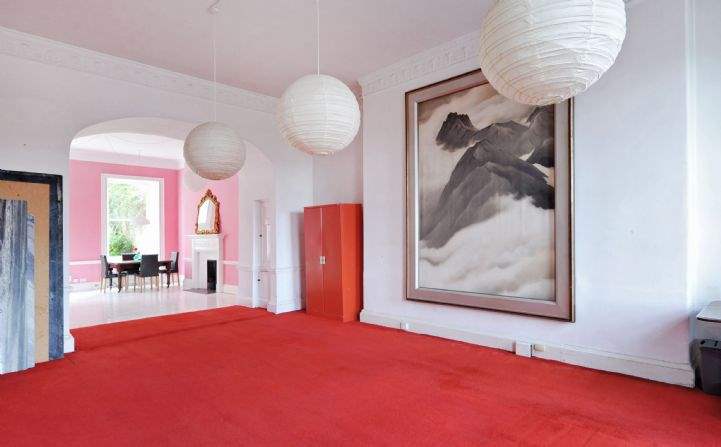The received wisdom for anyone selling their home is to present it as a blank canvas, keeping the décor neutral and the furnishings low key. But there are always exceptions to the rule and this house in Bath's prestigious Lansdown Cresent is one of them.
For 45 years, 7-8 Lansdown Crescent was owned by the late campaigner, aesthete, writer and artist Karl Jaeger. As an artist Jaeger was principally interested in kinetic sculpture and while much of his work is privately owned or in museums, a number of his installations remain in situ. The property demonstrates Jaeger's love of colour: the walls of pink, purple and yellow, highlighted with pops of scarlet, being the perfect foil for his collection of artworks.
This is not to say that the property's original features have been compromised. Lansdown Crescent is one of the finest examples of Georgian architecture in Bath and Jaeger's former home is a unique combination of two Grade I listed houses, thought to have been joined in the late 1890s. The internal detailing is superb, with many architectural features typical of the period, including exquisite cornicing, fireplaces and deep sash windows with original shutters.The fireplace at the heart of the first-floor drawing room is at least 2m high. Jaeger's exuberant flourishes serve to enhance rather than disguise.
The house has had other illustrious owners, too: astronomer and meteorologist Henry Lawson (1774-1855) once lived at number 7 (he built an observatory on the roof), while erstwhile occupant Sir Francis Younghusband, an army officer, explorer and spiritual writer, is believed to have been responsible for combining the two properties.
7-8 Lansdown Crescent is a unique opportunity to buy not just a slice of Bath's architectural history, but a piece of its creative history, too. Sometimes rules are made to be broken.
.jpg)
.jpg)
.jpg)
.jpg)
.jpg)
(1).jpg)
.jpg)

.jpg)